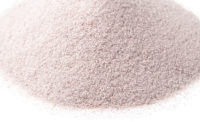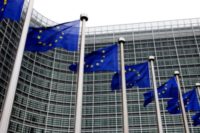 Artificial turf fields are now everywhere in the United States, from high schools to multi-million-dollar athletic complexes, states a recent report by NBC News. The tiny black rubber crumbs of which the fields are made -- chunks of old tires -- get in players’ uniforms, their hair, and in their cleats.
Artificial turf fields are now everywhere in the United States, from high schools to multi-million-dollar athletic complexes, states a recent report by NBC News. The tiny black rubber crumbs of which the fields are made -- chunks of old tires -- get in players’ uniforms, their hair, and in their cleats.
Exposure for goalkeepers, who are in constant contact with the turf, can be far worse, according to the report. In practices and games, they make hundreds of dives, and each plunge sends a black cloud of tire pellets into the air. The granules get into their cuts and scrapes, and into their mouths. Coaches now wonderif those crumbs – which have been known to contain carcinogens and chemicals – are making players sick.
Goalies with cancer
A list of 38 American soccer players -- 34 of them goalies– who have been diagnosed with cancer has been compiled by one coach. The geographic spread is nationwide. Blood cancers like lymphoma and leukemia dominate the list.
No research has linked cancer to artificial turf. But concern is growing that the turf material, made out of synthetic fibers and scrap tire -- which can contain benzene, carbon black and lead, among other substances -- has not been adequately tested. Few studies have measured the risk of ingesting crumb rubber orally, for example.
Conflicting conclusions
NBC’s investigation, which included a review of the relevant studies and interviews with scientists and industry professionals, was unable to find any agreement over whether crumb turf had ill effects on young athletes, or even whether the product had been sufficiently tested.
The Synthetic Turf Council, an industry group, says that the evidence collected so far by scientists and state and federal agencies proves that artificial turf is safe.
Environmental advocates want the Environmental Protection Agency and the Consumer Product Safety Commission to take a closer look. While both the CPSC and the EPA performed studies more than five years ago, both agencies recently backtracked on their assurances the material was safe, calling their studies “limited.” But while the EPA told NBC News in a statement that “more testing needs to be done,” the agency also said it considered artificial turf to be a “state and local decision,” and would not be commissioning further research.
Origins of artifical turf
Invented in 1964 by Monsanto, the first iterations of artificial turf were little more than synthetic ‘grass’ laid on top of concrete. First called “ChemGrass,” the product became famous as “AstroTurf” after it was installed in Houston’s Astrodome in 1966.
By the early 2000s, a better form of artificial turf had emerged. Called styrene butadiene rubber, or “crumb rubber,” the new turf contained tiny black crumbs made from pulverized car tires, poured in between the fake grass blades. The rubber infill gave the field more bounce, cushioned the impact for athletes, and helped prevent serious injuries like concussions.
Sports fields and playgrounds
Today, according to figures from the Synthetic Turf Council, more than 11,000 synthetic turf sports fields are in use in the U.S. Most of them are crumb rubber. Crumb rubber infill is also used in children’s playgrounds across the country.
One of the problems with researching the potential health hazards of crumb rubber fields is the sheer variety of materials used in the product.
Tens of thousands of different tires from different brands may be used in one field. According to the EPA, mercury, lead, benzene, polycyclic aromatic hydrocarbons, and arsenic, among several other chemicals, heavy metals, and carcinogens, have been found in tires.
FieldTurf, a prominent turf company, said ingredients might worry consumers, but the manufacturing process ensures that their product is safe.
“After the vulcanization process, those ingredients are inert, according to the company.
Industry leaders say while they encourage additional research, studies have shown that the substances found in crumb rubber are not at levels high enough to be at risk to children or athletes.
There are certainly chemicals in small amounts [in turf] as in many other things, said the Synthetic Turf Council. Evaluate most any material out there and at some level, some chemical might cause concern.
Hot weather may cause release of gases
Studies have found that crumb rubber fields emit gases that can be inhaled, according to NBC News. Turf fields can become very hot -- 10 to 15 degrees hotter than the ambient temperature – increasing the chances that volatile organic compounds (VOCs) and chemicals can “off-gas,” or leach into the air.
One study performed by the state of Connecticut concluded that “the use of outdoor and indoor artificial turf fields is not associated with elevated health risks,” but that more research was needed to better understand chemical exposures on outdoor fields during hot weekends and in indoor facilities, which showed higher levels of chemicals in the air.
Other studies have looked at whether run-off from crumb rubber turf is harmful to aquatic life, or whether the rate of injury on turf is lower than on natural grass.
Few studies have looked at the issues unique to goalkeepers – whether ingesting the particles by mouth or absorbing them into the body through cuts and scrapes is dangerous.
While many studies conclude that the fields studied do not present acute health risks, they often add the caveat that more research should be conducted.
It is unlikely, however, that further research will be conducted by federal agencies, according to NBC News.
In 2008, tests performed by New Jersey found lead on three artificial turf fields. The results spurred media coverage and concern across the country.
The Consumer Product Safety Commission, the federal agency in charge of regulating consumer products, tested turf samples. While the tests detected lead in the synthetic grass blades, the agency announced that turf was safe to play on.
Since its initial tests, according to the CPSC, the agency has worked with the industry to develop voluntary standards for lead content, according to NBC News.
NYC and LA stop using crumb rubber
Some cities have elected to scrap crumb rubber turf in favor of alternative infill. The New York City Parks Department stopped installing crumb rubber turf in 2008 followed the next year by the Los Angeles Unified School District, according to the news report.
One health researcher told NBC News that while studies haven’t definitively established that crumb rubber turf is harmful, the surface contains chemicals known to be hazardous.
“We know they’re there,” she said. “The point is, let’s go with better alternatives instead of spending years and millions of dollars establishing harm. If there’s a better way to do this, let’s just do it.”
“Turf fields come with a number of real risks and a number of real benefits,” a health expert told NBV News. “And every community…has to kind of weigh the different risks and benefits.”



